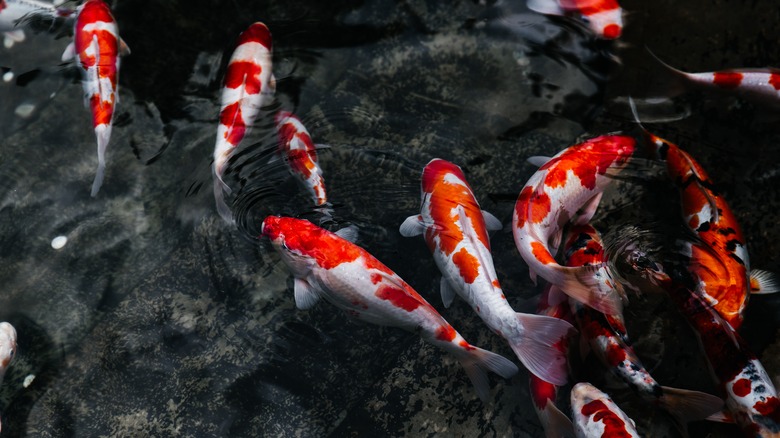How Aquaculture Originated In Ancient China
"The fields are chill, the sparse rain has stopped; the colors of Spring teem on every side. With leaping fish the blue pond is full." The tranquil image painted here is from a poem called "Clearing at Dawn" by Li Po (701-762), who is lauded as one of the two greatest Chinese poets of all time. The other legendary poet, Tu Fu (712-77), who was also a personal friend of Li Po, similarly praised running rivers teeming with fish in "Brimming Water": "In the wake of my barge the fish leap, cut the water, and dive and splash."
There's a reason that rivers densely populated with fish are a prominent theme in early Chinese poetry. According to Alimentarium, the earliest recorded evidence of aquaculture can be traced back to China during the Zhou dynasty (1112-221 B.C.E.). There, it says, Chinese fish farmers were the first to domesticate the carp, which was deemed a symbol of good luck. That is until Emperor Li (meaning carp) outlawed farmers from breeding carp during the Tang dynasty. And that was only the beginning of aquaculture as a pillar of Chinese industry.
China's past and present in aquaculture
In his book "Aquaculture in China: Success Stories and Modern Trends," Jian-Fang Gui et al. outline China's role as the global forerunner of aquaculture, both as a food-producing industry and as a cultural phenom. "China leads the global aquaculture production in volume, in the number of species that are farmed, and have contributed immensely to transforming the practices from an art to a science," states Wiley.
Nathanael Hishamunda of the FAO Fishery Development Planning Service says records of oyster farming in China date as far back as the Han dynasty. In fact, it says, Xu Guangqi of the Ming dynasty (1639 C.E.) recorded specific methods of pond fish farming and ways to prevent fish from contracting diseases. Around the same time, Tu Benjun identified roughly 200 species of marine shellfish, finfish, crustaceans, and more.
Today, though, China's historically massive aquaculture industry might be in for a shift. A 2020 essay published in the scholarly journal One Earth, says the country's role as a longtime world seafood giant could be changing. As of 2018, China was responsible for 58% of global seafood production — but it is predicted that China will need 6 to 18 million metric tons more (a 9% to 27% increase) if it will continue to support projected domestic consumption in smaller communities at its current volume.

